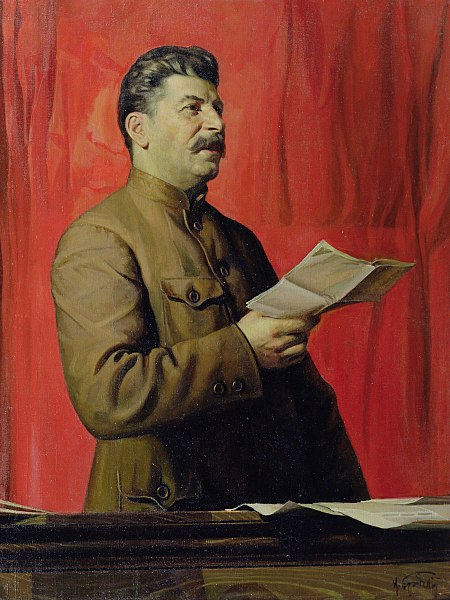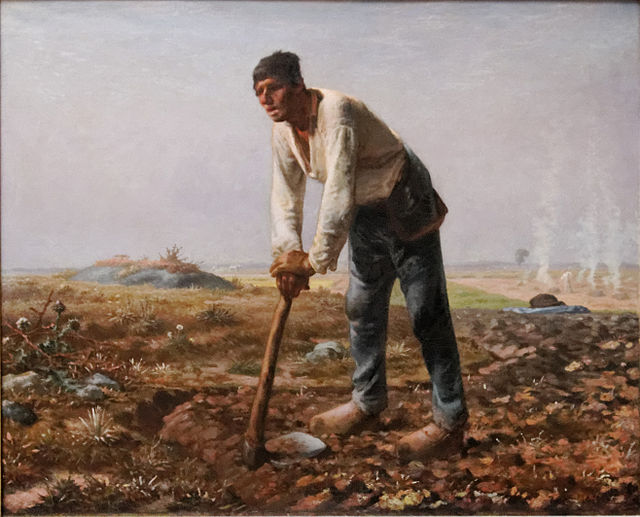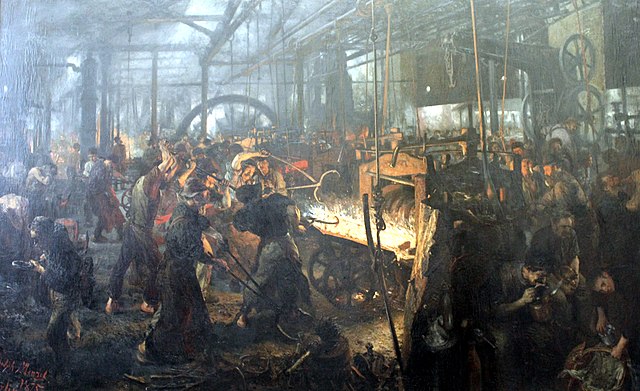Socialist realism was the official cultural doctrine of the Soviet Union that mandated an idealized representation of life under socialism in literature and the visual arts. The doctrine was first proclaimed by the First Congress of Soviet Writers in 1934 as approved method for Soviet cultural production in all media. Following World War II, socialist realism was adopted by countries politically aligned with the Soviet Union. The primary official objective of socialist realism was "to depict reality in its revolutionary development" although no formal guidelines concerning style or subject matter were provided.
Image: Isaak Brodsky stalin 02
Image: Propaganda of North Korea (6073884618)
Image: Musee Kaysone Drap
Image: Kievsk APL 31
The proletariat is the social class of wage-earners, those members of a society whose only possession of significant economic value is their labour power. A member of such a class is a proletarian or a proletaire. Marxist philosophy regards the proletariat under conditions of capitalism as an exploited class— forced to accept meager wages in return for operating the means of production, which belong to the class of business owners, the bourgeoisie.
Secessio plebis, a form of protest in ancient Rome where the plebeians would leave the city, causing the economy to collapse
Jean-François Millet - The man with the hoe
Adolph Menzel - Iron rolling mill (1872-1875)
A 1911 Industrial Worker publication advocating industrial unionism based on a critique of capitalism. The proletariat "work for all" and "feed all".








